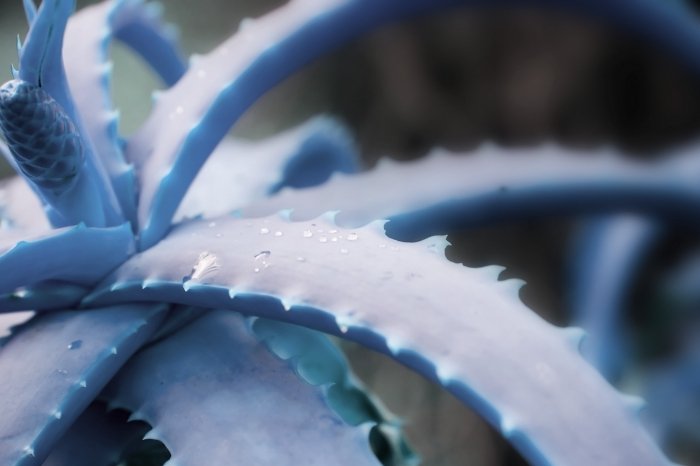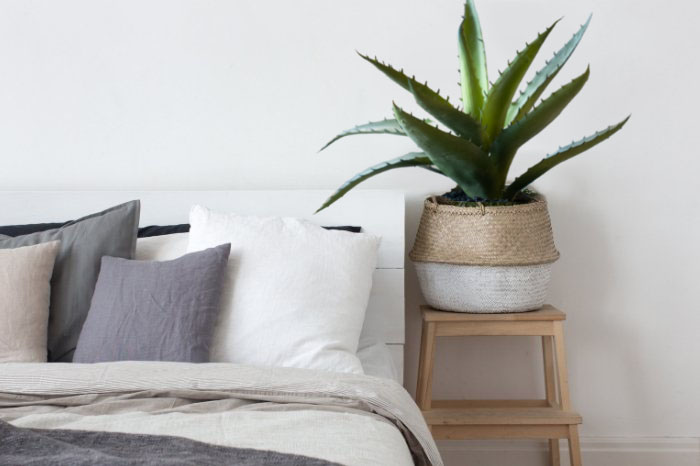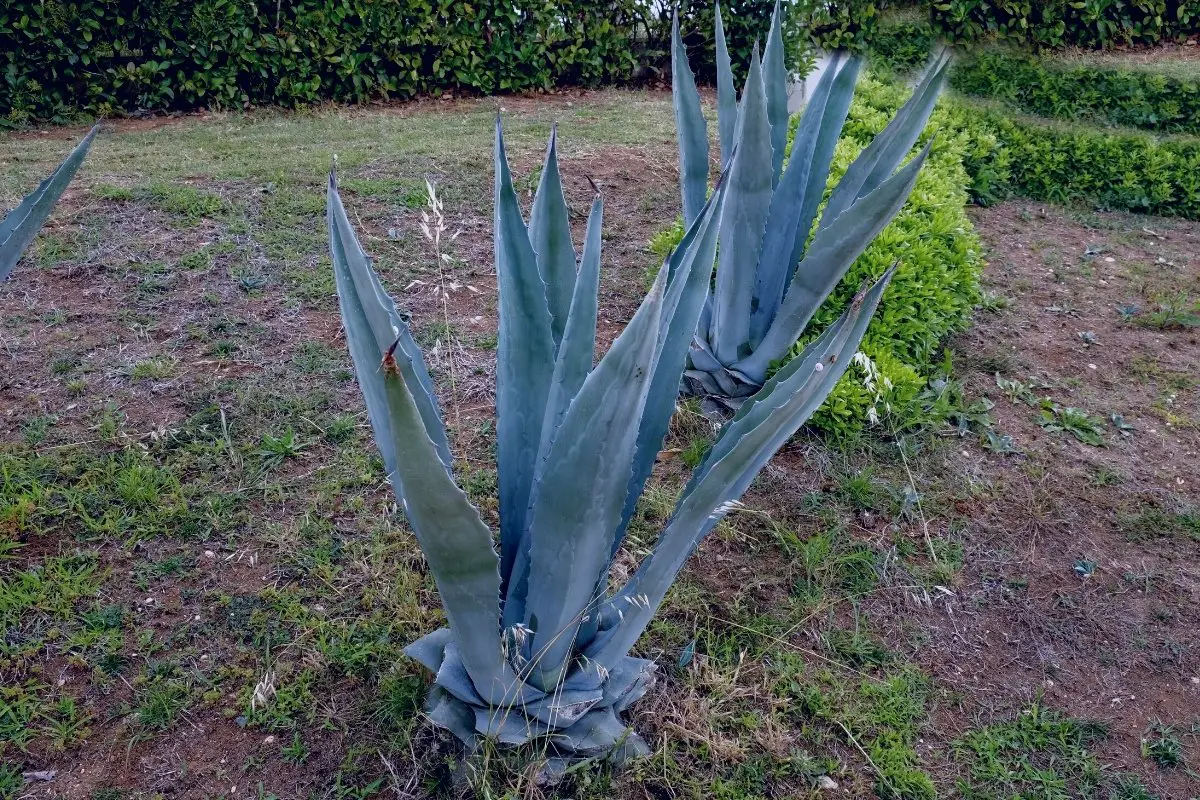Last Updated on February 3, 2022 by Griselda M.
The aloe vera temperature tolerance level is high compared to other common plants that easily die from too high or low weather conditions.
The beautiful aloe vera is a hardy plant commonly grown outdoors or indoors and extremely easy to care for.
However, as hardy, as it is, aloe is also sensitive to extreme high and cold temperatures that could be detrimental to its growth.
However, Aloe vera thrives in humid temperatures does not expose them to too much direct sun. Starting from May to September, when the sun is too hot in some areas, you can bring your aloe plants indoors or cover them with some shade if growing in the garden.
Let’s learn about the aloe vera temperature tolerance.
Aloe Vera Temperature Tolerance – Aloe Vera Cold Hardiness
Protecting your aloe plant in the cold season is critical. Aloe is only hardy in the USDA plant hardiness zones
However, even with its hardy state, it cannot tolerate cold temperatures below 40 degrees Fahrenheit. Aloe plants thrive in temperatures between 55 and 80 degrees Fahrenheit. This makes aloe vera an ideal houseplant.
When the temperature starts to drop below 50 degrees Fahrenheit during winter, your aloe plant starts to struggle. These plants naturally retain plenty of water, making them intolerant to freezing temperatures.

If you are growing your aloe vera plants in the garden, and the temperature drops to 32 degrees, you can cover it to prevent frost damage. Do so by driving the stakes into the ground around the plant. Drape a blanket over the stakes covering your plant fully. Place some rocks on the edges to prevent the blanket from flying away. This will protect your plant from frost damage.
Get to Know How To Root An Aloe Plant
What Temp Kills Aloe Vera?
Aloe plants do well in warm temperatures found in the plant’s natural habitat. Freezing temperatures demand that the plant receive special care to help it survive the extreme weather.
Aloe vera is not a cold-hardy plant and will die when exposed to temperatures below 50 degrees for a prolonged time. Frost and hard freeze both destroy this plant to the point of death.
However, if you live in an area that receives mild frost and only a few leaves turn brown-black, it can recover and grow back new, healthy leaves after the winter season.
Aloe Vera Temperature Tolerance – Aloe Vera Cold Shock
Aloe vera cold shock is a burn that occurs when the aloe plant is subjected to freezing conditions that are too tough for it to withstand. Generally, aloe thrives in warm, arid conditions due to its ability to hold more water in its leaves.
When the temperatures grow cold, the water stored in the leaves freezes and destroys the leaf tissue.
Succulents Simplified: Growing, Designing, and Crafting with 100 Easy-Care Varieties
If your plant has been affected by cold shock, these steps will help rejuvenate your plant.
- Place your aloe plant in a bright and warm place, but not directly under the sun.
- Stop watering your aloe plant for a couple of days to help the dry and damaged leaves fall off the plant independently.
- Prune all the damaged leaves cutting them off with a sharp and clean knife.
- Check to see if the cold shock damage has spread all the way to the roots. If they are partly damaged, let them dry for some time but cut the already damaged roots.
- Once you have salvaged your aloe plant from frost, it will begin the growth phase producing new leaves from the center of the plant.
Click Here to Learn More About:
Aloe Vera Temperature Tolerance – Is Aloe Vera Indoor Or Outdoor?
Depending on the region you live and grow your aloe plant, you can either grow it indoors or outdoors, provided the conditions are ideal.
In sunny and warm areas, you can grow aloes outdoors, and they will thrive. Aloe also grows faster outdoors than indoors because it receives a lot of sunlight for most of the day. Even though you are providing sunlight to an outdoor aloe, remember to place it under a shade so you don’t kill it with too much sun.
During summer and springtime, the plant grows fastest and helps to keep indoor plants outdoors during these months.
When summer is almost coming to an end, prepare to get your plant indoors to protect it from the coming frost and cold weather. Bring your plant indoors before the temperature dips to below 40F.
Provide plenty of light while indoors and don’t overwater it.
Read more About What To Do With Sunburnt Aloe Vera Plants
Does Aloe Vera Need Full Sun?
Aloe plants require at least 6 hours of direct sunlight. However, be cautious! Moving your aloe plant from a shady place to direct sun can cause your plant to get sunburn.
Aloe appreciates a good deal of light but does not like direct sunlight for too many hours. Direct sunlight dehydrates the plant too much, leaving the leaves dry and yellow.
The resilient aloe plant copes extremely well to heat, thriving both outdoors during summer and indoors during winter. Place it near a window that gets plenty of light but avoid having the sun’s rays hitting the plant directly.
Check Out Aloe Plant Temperature: Can It Survive Below 55°F
Can We Keep The Aloe Vera Plant In The Bedroom?
Aloe vera is one of the best bedroom plants that help purify the air. This plant emits plenty of oxygen at night, helping you sleep better.
Aloe does not require frequent watering; thus, you won’t have to water a plant in your bedroom every time. From one aloe plant, you can get a chance to grow other aloes to put in other parts of your house. Remember to position your aloe plants by the windows as it requires plenty of direct sunlight.

Installing bedroom plants helps improve the quality of your night’s rest due to clean, fresh air that helps soothe and reduce stress and anxiety levels. Lack of enough quality sleep can affect your mood and energy levels the following day. Aromatherapy from bedroom plants can help improve the quality of your sleep.
Which other bedroom plants should you get to help you fall asleep?
Conclusion
Aloe vera temperature tolerance is way better than other plants as it has the advantage to survive both indoors and outdoors. Aloe is a magnificent plant that has its beauty and enough health benefits; it’s like growing an entire pharmacy in your home.
Learn more about Aloe Plant Falling Over: Avoid The 7 Common Mistakes
Caroline is a gardener who loves to get down to the nitty–gritty of gardening. She proudly proclaims herself as a ‘dirt worshipper‘ and can often be found deep in the garden, covered in soil and singing to her plants. As a self–proclaimed ‘plant whisperer‘, Caroline believes that plants need love and attention just like any other living thing, and she loves to give them both. When she‘s not tending to her garden, you can often find her researching the latest gardening trends, or teaching others how to make their gardens thrive



